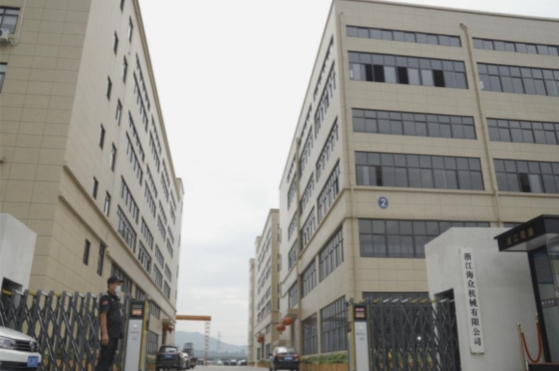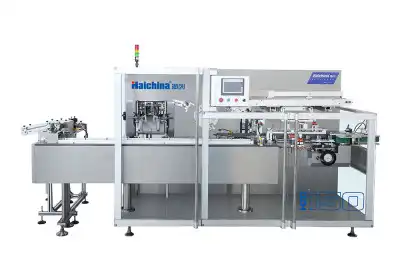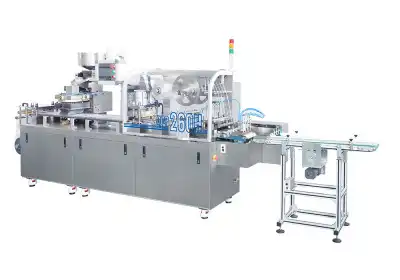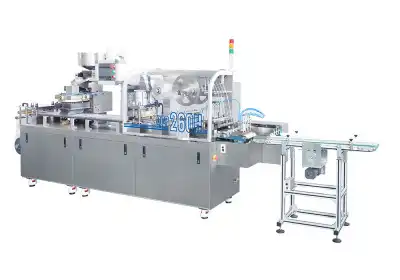The Evolution of Pharmaceutical Packaging Technology
What is a Pillow Packing Machine
A pillow packing machine, also referred to as a pillow packaging machine or pillow wrapper, is an advanced, automated system designed to wrap products in a pillow-shaped package. This machine works by feeding a continuous film of packaging material, wrapping it around the product, sealing it at both ends, and then cutting the sealed package into individual units. Pillow packing machines are commonly used across diverse industries, such as food production, pharmaceuticals, and consumer goods, due to their efficiency and ability to create uniform packages.
Advantages of Using Pillow Packing Machines
Incorporating a pillow packing machine into your business operations brings a range of advantages. These include faster packaging speeds and improved operational efficiency, which can reduce overall production time. Additionally, the machine can help lower labor costs by automating manual tasks. With consistent packaging quality, products have a more polished, professional look, which can enhance brand image. Furthermore, pillow packing machines are designed to maintain high hygiene standards, which is especially crucial for industries like food and pharmaceuticals.
Types of Pillow Packing Machines
Various types of pillow packing machines cater to different packaging requirements. Horizontal flow wrappers are ideal for items that require delicate handling, as they wrap products gently without damaging them. Vertical form-fill-seal machines are commonly used for packaging granular or powder-based products. Specialized versions, like pharmaceutical pillow packing machines, are built to meet strict regulatory standards for hygiene and safety. Each machine type is designed to meet specific industry needs, ensuring optimal packaging performance for a wide array of products.
Key Features of Modern Pillow Packing Machines
High-Speed Operation and Throughput
One of the most significant advantages of pillow packing machines is their ability to operate at high speeds. Advanced models can produce hundreds of packages per minute, dramatically increasing production capacity. This high-speed operation is achieved through precision engineering and synchronized components that work in harmony to create a continuous flow of packaged products.
Flexibility and Adaptability
Modern pillow packing machines are designed with flexibility in mind. They can accommodate various product sizes and shapes, from small tablets to larger capsules. Quick-change tooling and adjustable settings allow for rapid transitions between different product runs, minimizing downtime and maximizing production efficiency. This adaptability is crucial in the pharmaceutical industry, where product diversity is common.
Quality Control and Compliance Features
To meet the stringent requirements of pharmaceutical packaging, pillow packing machines incorporate advanced quality control features. These may include integrated check weighers, metal detectors, and vision systems to ensure each package meets specified standards. Additionally, these machines are designed to comply with cGMP guidelines and can provide detailed documentation for regulatory purposes, streamlining the compliance process for pharmaceutical manufacturers.
Impact on Pharmaceutical Manufacturing Efficiency
Increased Production Capacity
The implementation of pillow packing machines has led to a substantial increase in production capacity for pharmaceutical companies. By automating the packaging process, manufacturers can produce more units in less time, meeting growing market demands without significantly expanding their workforce or facility space. This increased capacity allows companies to take on larger contracts and respond quickly to market fluctuations.
Cost Reduction and Resource Optimization
While the initial investment in a pillow packing machine may be significant, the long-term benefits in cost reduction are substantial. These machines reduce labor costs, minimize material waste, and optimize the use of packaging materials. The precision of automated packaging also leads to fewer defects and recalls, further saving costs associated with quality issues. Additionally, the compact design of modern pillow packing machines helps optimize floor space in production facilities.
Enhanced Product Protection and Shelf Life
Pillow packing machines create hermetically sealed packages that provide superior protection against moisture, light, and oxygen. This enhanced protection is crucial for maintaining the efficacy and stability of pharmaceutical products throughout their shelf life. The consistent sealing process ensures that each package maintains its integrity from production to consumption, reducing the risk of product degradation and extending shelf life.
Conclusion
Pillow packing machines have undeniably transformed the landscape of pharmaceutical packaging, offering unparalleled efficiency, precision, and quality control. By automating complex packaging processes, these machines not only boost productivity but also ensure consistent product quality and compliance with industry standards. As technology continues to evolve, pillow packing machines are expected to play an even more crucial role in meeting the growing demands of the pharmaceutical industry, driving innovation, and improving patient safety through reliable packaging solutions.
FAQs
1. What types of pharmaceutical products can be packaged using pillow packing machines?
Pillow packing machines are versatile and can package a wide range of pharmaceutical products, including tablets, capsules, powders, and single-dose medications.
2. How do pillow packing machines ensure product safety and integrity?
These machines create hermetically sealed packages that protect against moisture, light, and oxygen. They also incorporate quality control features like check weighers and vision systems to ensure package integrity.
3. Can pillow packing machines be integrated with existing production lines?
Yes, modern pillow packing machines are designed to be easily integrated into existing production lines, often with modular components for flexibility.
Expert Pillow Packing Machine Solutions | Haichina
At Haichina, we specialize in providing top-tier pillow packing machines tailored for the pharmaceutical industry. Our machines boast high-speed operation, low energy consumption, and compact designs, making them ideal for various packaging needs. With CE, cGMP, and ISO 9001 certifications, our equipment ensures compliance and quality. We offer customizable solutions and comprehensive training services to optimize your packaging operations. For expert advice on pillow packing machines or to discuss your specific requirements, contact our team at [email protected].
References
Johnson, A. (2022). Advances in Pharmaceutical Packaging Technologies. Journal of Drug Delivery Science and Technology, 68, 103-115.
Smith, B., & Brown, C. (2021). The Impact of Automation on Pharmaceutical Manufacturing Efficiency. International Journal of Pharmaceutical Sciences and Research, 12(4), 2145-2160.
Lee, D. (2023). Industry 4.0 in Pharmaceutical Packaging: A Review. Trends in Food Science & Technology, 123, 45-57.
Garcia, M., et al. (2022). Quality Control in Automated Pharmaceutical Packaging Systems. Journal of Pharmaceutical and Biomedical Analysis, 215, 114728.
Wilson, R. (2021). Cost-Benefit Analysis of Automated Packaging in the Pharmaceutical Industry. International Journal of Production Economics, 234, 108064.
Thompson, K. (2023). Sustainability in Pharmaceutical Packaging: The Role of Advanced Machinery. Sustainable Materials and Technologies, 32, e00397.





